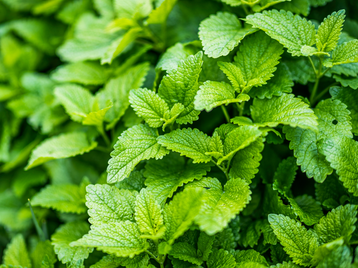What is mindfulness?
The best way to describe mindfulness is as shifting from a “do-ing” mode to “be-ing”. Instead of executing, thinking, or planning, you’re choosing to simply be.
However, the idea isn’t to force stillness onto your mind. The most common misconception is that the objective of mindfulness and meditation is to not think about anything, but this is far from the truth. The aim is to observe your inner climate, noticing how thought spirals and physical feelings come and go – without judgement.
Anyone can practice mindfulness: it doesn’t require any particular tools, books, or spiritual beliefs. It sounds cliché, but mindfulness is purely about being present in the moment by connecting with your physical sensory experience and inner world, moment by moment.
The benefits of mindfulness
The best news about mindfulness is that it’s backed by real science. Evidence suggests that regular mindfulness practice has many benefits, including:
- Stress and anxiety reduction
- Improved cognitive function and memory
- reductions in symptoms and relapse rates in mental illness
- Improved immune function
- Enhanced self-compassion and wellbeing
- Improved pain symptoms and intensity
- Prevention of depression
- Decreased blood pressure
- Reduced insomnia
How to start practising mindfulness
There are two main ways you can start to practice mindfulness. The first is by introducing mindful practices into your daily activities, and the second is by meditating. Ideally, you should do a bit of both to get started with mindfulness and get the full effect.
With mindful practises, the key is to stop your internal autopilot from kicking in and instead giving your full attention to the present moment. You can do this by changing your perspective on existing behaviours, or interrupting existing patterns to get out of your usual routine and the automatic “do-ing” mode.
By switching up your unconscious habits and behaviours, you not only live life more fully, but you also break up your normal thought patterns, becoming more aware of automatically triggered negative thinking.
10 mindful practises to try
When trying each of the practises below, try to reconnect with your senses as if it was your first time taking in the world around you. Ask yourself: what are you smelling, tasting, seeing, feeling, hearing?
And if your mind starts drifting, don’t judge yourself or feel guilty. You haven’t failed! Try to gently bring your focus back to what you’re doing, as many times as you need to.
1. Enjoy a treat the fullest
The next time you grab a packet of crisps or chocolate bar, try to make sure your first bite is as mindful as it can be. A square of dark chocolate is perfect for this, but textured foods like raisins are also a fun option.
Take a few minutes for the whole experience:
- Look at what you’re about to eat carefully, exploring its appearance, whether uniform or not. Study it as if it were a piece of priceless art in a museum.
- Take it into your hands and feel its textures all over: smoothness, grittiness, imperfections, and everything else you can discover.
- Once you’re ready, bring it closer to your face and smell its aroma, with your eyes closed if that helps you notice more.
- Then, put it in your mouth, and explore it with your tongue before biting down. What flavours are you starting to taste? How is the tactile experience compared to using your hands?
- Finally, bite down once and taste the full range of flavours, new textures, and sensations in your mouth. Keep going, mindfully, until you’re ready to swallow.
It may sound silly, but this practice will bring to light new aspects of foods you’ve eaten your whole life without thinking. You might discover new flavours you never noticed before!
2. Indulge in your favourite drink
If you’re getting ready to unwind with a drink like Three Spirit’s Nightcap, follow a similar procedure as above. Pour it in a clear glass so you can take in the colour, smell it like it’s a perfume you’re trying out, and take your first small sip in full consciousness. Embrace your inner sommelier and notice all the flavours and aromas swirling around your mouth, only swallowing when you’re ready.
Keep drinking mindfully for the rest of your drink if you can, and try to avoid gulping automatically as you normally would. Enjoy each sip for the wonderful experience it is!
3. Brush your teeth with the opposite arm
Most of us aren’t present in the moment when we do something as routine as brushing our teeth. Our mind wanders, we start worrying or planning for the day to come, without really thinking about what we’re physically doing.
When you brush your teeth tonight, try to be present in each moment: from unscrewing the ridged toothpaste cap to squeezing the viscous paste out, and from the repeated movement of your arms to the feeling the bristles brushing back and forth across your teeth and gums.
Do it with your non-dominant arm to prevent autopilot from taking over. It will feel strange at first, but it will help you be more aware of what you’re doing.
4. Sit in a different chair
If you have a usual seat at the dining table, at the office, or in a café, try noticing this automatic behaviour and making the choice to sit elsewhere or shifting the seat into a new place. This is a tiny change, but the new perspective might be just what you need to be more conscious of the decisions you make on autopilot without second thought. What do you observe from this new vantage point?
5. Focus on your breath for one minute
Wherever you are, however you’re feeling, you always have your breath as an anchor to focus on. Concentrating on each breath you take allows you to notice how the mind is bombarded by hundreds of thoughts per minute, and how easily we get swept away by them. With practice, focusing on the breath like this will allow you to notice these thoughts as they arise, and let them go like clouds moving along the skyline.
Sit down comfortably on a chair and close your eyes. Focus as you breathe in, and breathe out. Don’t breathe more deeply or slowly, just observe the sensations of your chest and stomach moving as you breathe normally. If you notice your mind wandering, that’s a good sign! You’re learning to observe these patterns. Gently nudge your attention back to the breath without criticising yourself, even if it happens over and over until the minute is over.
6. Talk to a stranger
Did you know that chatting to a stranger is a genuine health hack? Scientific studies suggest that striking up a conversation with a stranger we’ll never see again is a morale booster, even if it’s typically the last thing we think of doing on public transport or while queuing at the post office.
After the homebound solitude of covid lockdowns, making new connections is exactly what we need. So, break the pattern, do something random, and find new awareness in your life by having a conversation with your morning coffee barista, or whoever you wouldn’t normally ever think to exchange words with.
7. Go to the cinema and choose a film at random
Injecting a bit of randomness in your life is another way to break habits and wave goodbye to your autopilot. Normally, we go to the cinema with a specific plan to watch a certain film.
This time, do the opposite: set a time like 7pm, grab a friend, and go to the cinema without looking at the list of films on show ahead of time. Once there, buy a ticket for the next film to start – whatever it may be.
Try to notice and let go of any thoughts like worrying about or not having enough time for a break or not finding a film you’ll enjoy. Just go with the flow!
8. Do a body scan
A body scan is a type of meditation you can follow with a guided narration or without, and is a great practice if you’re new to meditating. It trains you to focus entirely on body sensations, getting out of your mind and avoiding judging what you’re experiencing.
Set aside 5-10 minutes for this practice. First, lie down and take a moment to make sure you’re comfortable. Then, focus on individual parts of your body one by one, starting with your feet. Focus on the internal and external sensations, such as any aches or the feeling of your socks, and observe them as they come and go. If you feel nothing, that’s also fine. Then, move on to your ankles, calves, knees, and so on until you reach your head.
9. Take a mindful walk along a new route
Walking is a healthy and accessible form of exercise that provides a great opportunity for mindfulness, providing a feast for all five of the senses.
Try to avoid picking your usual route (you don’t even need a particular destination), and don’t rush – break the habit of fast-paced commutes and errand runs.
Really connect with your body as you walk: feel the sensations of the ground against the weight on your feet, your muscles tensing and moving, your legs as well as your arms and the rest of your body. Be aware of each step you take.
Take in your surroundings, including the sounds of nature or traffic, the sight of people and animals, and even the good and bad smells that permeate. Look down, and look up. You might discover things around the corner of your home or office that you had never noticed before.
10. Meditate twice a day for a week
Before you get scared at the thought of meditation, just remember: there’s a valid reason the idea of lying down and trying to think of nothing for an hour is daunting, and that’s because it’s practically impossible.
Meditation takes practice, like exercise. No one nails it on their first, third, or fifth time. If you’ve done any of the above practises already, you’ll know that an empty mind is impossible to achieve – but what you can learn is to not let yourself get swept up by your thoughts and just watch them like a neutral observer. That’s why a regular 10 minute practice twice a day is ideal to truly come to understand the reality that you are not your thoughts.
There are thousands of guided mindfulness meditations available for a moment of daily calm, whether you prefer using YouTube, apps, or podcasts. Try one in the morning before getting dressed, at lunchtime, after having a cup of tea, or in the evening to clear your mind before sleep. The more you do it, the more you’ll reap the benefits!





